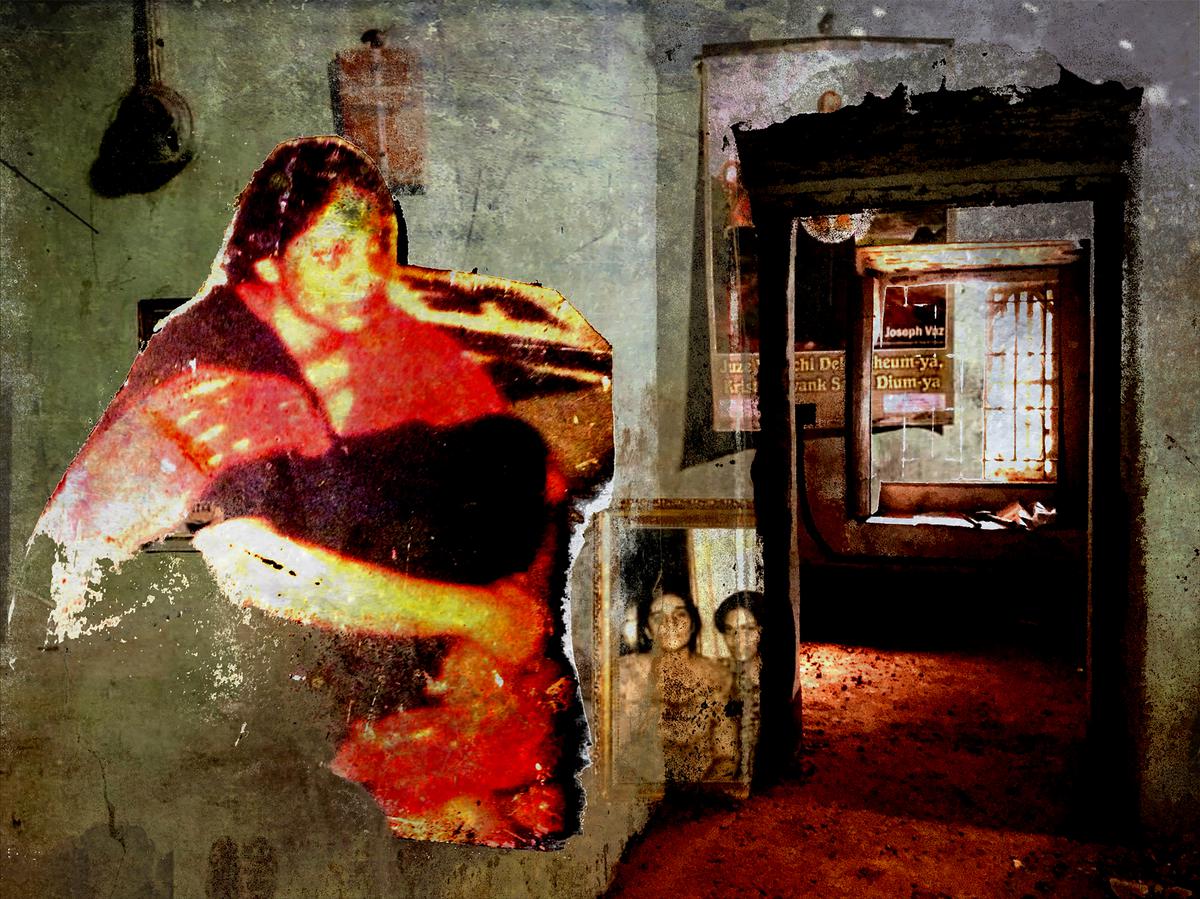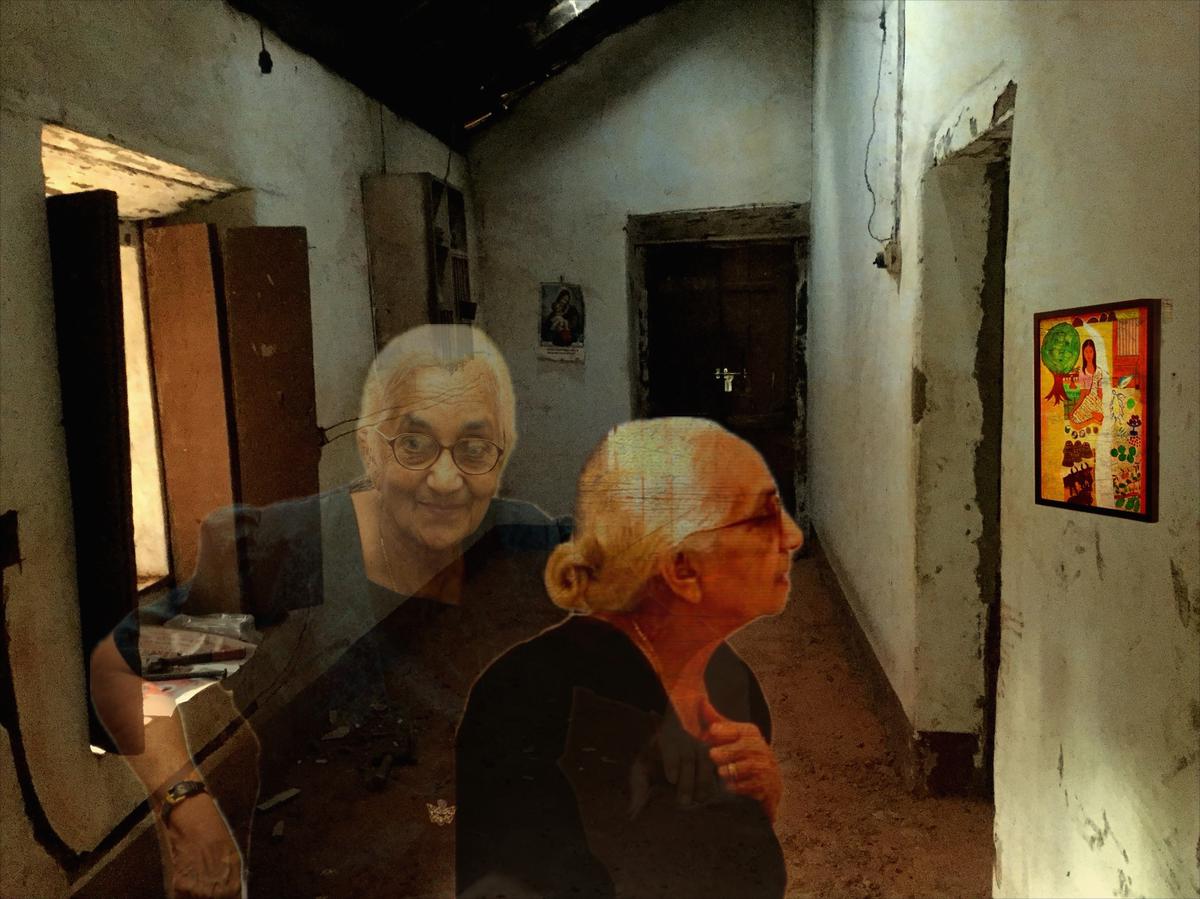Quilts and memories go together — the varied scraps of fabric forming a harmonious, scrapbook-like whole. In 2015, when Goa-based artist and writer Savia Viegas was sorting through her late mother’s belongings, she came upon such a quilt. Heavy with embroidery and mould, it told stories of her past, her family, and her village, Carmona, in South Goa. Her mother, Berta Elisa Viegas, had made it from old pairs of jeans that Savia had had discarded or collected. “The motifs she used [roses, tigers, people] were part of my childhood. They were the stories of my family, which I grew up listening to,” she shares.

Savia Viegas
Later, during the pandemic, Savia, 66, picked up the quilt once more. This time, she was inspired to create something new — as a tribute to her mother. Ten hand-embroidered pieces that she created over the next 18 months, on one-foot-by-one-foot pieces of denim, are now part of an ongoing exhibition titled Carmona’s Talking Quilt — along with paintings, photo montages, and upcycled pieces of her mother’s quilt that she crocheted together. The embroidered panels are like storyboards, each telling a tale of caution or good counsel from Savia’s life and that of the village. We spot one about a father-daughter relationship and another on a transgender couple, titled Gaby you be Beleza! “They were not outliers; they were part of the community,” she recalls.
Gaby you be Beleza!
The use of denim is significant for Savia. “It represented my rebellious youth, and being part of the larger global community,” she says. “I have also collected jeans worn by people during important moments, like when they witnessed the tearing down of the Berlin Wall or when they proposed marriage. Now I have embossed stories of my village on them. So, it has become layered and tactile.”

Giving agency to embroidery
Savia, a painter, made a conscious choice to use the medium of embroidery to tell her stories. “My mother was a seamstress and taught machine embroidery, but she never taught me,” she says, explaining how Berta wanted her daughter to do well in her studies and stay away from the craft that is often labelled ‘women’s pastime’.
Savia upcycled her mother’s quilt, cutting up and crocheting together the pieces undamaged by mould
So, through the exhibition, she wanted to give agency and recognition to it. Savia added another dimension to the work by detailing her quilts in stitches inspired by arpillera, an embroidery form from Chile that was used as a sign of resistance during the military dictatorship of Augusto Pinochet (1973-90). Her storytelling — based on synoptic narrative as seen in Buddhist art — also reflects her background as an art historian.
Savia collaborated with British artist Charlie Holt, who works with collages, for the exhibition. Holt, whose work is rooted in ideas of surrealism, dadaism, and pop art, used images of Savia’s family and house in Carmona, and juxtaposed them with photos of her embroidering. “Collage enables me to play with layers — of time, of information. They are palimpsests, juxtaposing unconnected images and creating a new narrative,” he says. They are printed on khadi paper made from old cloth.

Charlie Holt’s digital collages


Stories in fabric
Why did she want to share these stories? Savia says that one of the reasons is because the whole idea of community and village is dying. “I am suffused with sadness,” she says, recounting how 70% of the houses in her village are locked now, the people having migrated to the UK and parts of Europe because of issues “from economics to caste”. But, at the same time, others are migrating to Goa in search of paradise. Her quilt titled Cornucopia speaks about this.
One of her favourite pieces is embroidered with the story of a tiger. It is based on an incident that supposedly happened in 1890, when the striped cat strayed into their ancestral property. The woman of the house — who was milling rice, with her toddler by her side — fought back her fear and managed to lock the beast in a room. Villagers later killed it with a country rifle.
Tiger, Tiger!
Viegas grew up listening to the story from family elders. “I even had a waistband with a tiger claw embedded in silver, which I wore till I was eight,” she says, suggesting how the memories, like the quilts, are tactile and real.
Till May 5 at the Museum of Goa.
The Goa-based freelancer writes on art, culture and ecology.
Meet Mahtab Ahmad, known for his keen insights into the latest trends and news. Join Mahtab on his blog, where every post is a exploration of the ever-evolving now.